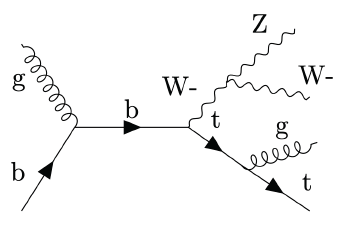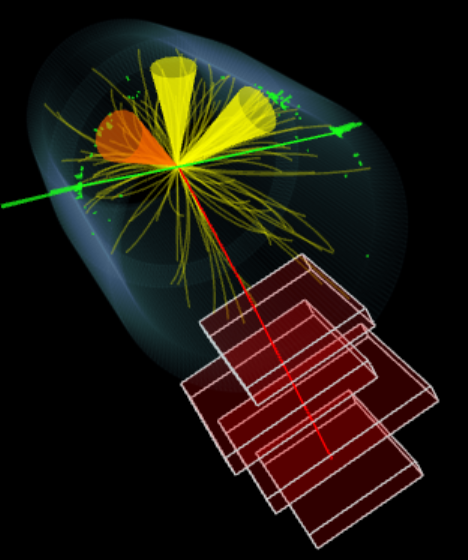These "elite" particles are very interesting to study, because their phenomenology is quite varied and rich. That is why at the Large Hadron Collider, CERN's marvelous particle smasher, we have since 2009 been collecting pictures of their creation and decay. Now, getting a picture of any single one of them is already quite a feat -the most common of the four, the W boson, gets produced only once in a million particle collisions, and the most camera-shy, the Higgs boson, only once in three billions. And getting a pair of them in the same picture (except for top-antitop quark pairs, which naturally go along with one another) is even harder.
So you can imagine how difficult and rare can be the instance of getting in the same shot a trio of them: it is no less of a feat of a photographer managing to image Bernard Arnault, Elon Musk, and Jeff Bezos having a drink together. The analogue of that is what the CMS experiment managed to obtain recently, by identifying collisions that produced a top quark, a Z boson, and a W boson in the same physical reaction.

The graph above is a technical representation of the reaction by which the trio of heavyweights is produced by a LHC proton-proton collision. Time flows from left to right, so that lines describe the history of particles interacting (where they join) and propagating through space (the vertical direction).
Below is one computer graphics reconstruction of the identified particles produced in one of the collisions seen by CMS, which are selected as "candidates" of the tWZ production process. If anybody sold you such a picture as a genuine production of those three particles you should report them to the science police (what? there is no such thing? Well there should be one, if you ask me), as in the quantum world there can be no certainty on the identity of phenomena. However, we can confidently say that the event does belong to a set whose elements have a significant chances of being due to the reported process. Dull, yes, but accurate.

In the picture, the red line is a muon, produced by a W boson decay; the two green lines are electrons produced by a Z boson decay; the two yellow cones represent hadronic jets produced by the decay of another W boson; and the orange cone is a b-quark jet. The top quark decay yielded the second W boson, so one could argue that the picture actually describes not three, but four heavy particles!
By collecting and studying events such as the one pictured above, the CMS researchers can study in detail the properties of weak interactions and try to see if everything is in order with theoretical predictions. The rationale is that when you study phenomena that theory predicts to be exceedingly rare, your odds of spotting the contribution of some very faint additional physical process becomes much larger. Now, we know that if there are new physics processes (new forces of nature, e.g.) they must be very weakly affecting the phenomenology of elementary particles as we know it: thus, it makes sense to zoom in on the very rarest processes.
So far, the Standard Model has kept denying us the satisfaction of finding something it does not predict or include. But we keep looking, and possibly one day we will be able to understand more of the most complex and wonderful puzzle Nature has laid out for us to solve.



Comments